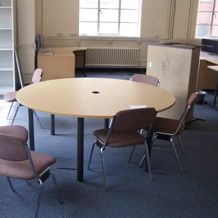Archaeology of the Contemporary Past
UNDER THEMES: Conservation/Heritage Management; Medieval and Historical Archaeology; Theory and Practice

Other researchers:
- Change and Creation Group
- English Heritage Characterisation Team
- Dr Rodney Harrison (Open University)
Archaeology of the Contemporary Past is an emerging area of research activity, involving a range of disciplines and with researchers from the higher education and heritage sectors. People's definitions vary, but for me this is a period of study that deals literally with the contemporary past, the world we have experienced and shaped through our daily lives and practices. This does not only mean the layers that we ourselves have added to the palimpsest, but the palimpsest itself. As Alfredo Gonzales Ruibal has said, the past 'percolates' - the contemporary landscape contains traces left yesterday alongside those of prehistory and everything in between.
Taken literally, the contemporary past for most of us is the period after the Second World War, the landscape we have shaped in our lives and social practices or which are recalled and remembered by our parents' generation. The 'contemporary' period cannot easily be fixed to a precise chronological bracket. Indeed, it might be best to see this as a period defined backwards, from the present day to a time when the past seems (subjectively) no longer modern. In the past this has often been the point at which living memory fades but it will be interesting to see whether the great prevalence of vivid visual and aural (and now digital) records of the period since 1950 prolongs (or even extends) that sense of proximity and engagement.

Such close proximity presents a challenge, not least to those of us more comfortable with the greater distance of the deeper past. We are studying places and things that we think we understand; that are well known to us; and that we and others have strong opinions about. But these are not reasons to exclude the contemporary past from archaeological enquiry. As others have said, archaeology allows us to challenge the 'taken-for-granteds', and to render the familiar unfamiliar. My co-authored book After Modernity covers much of this and more.
